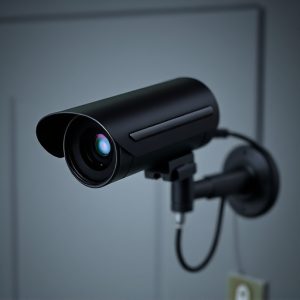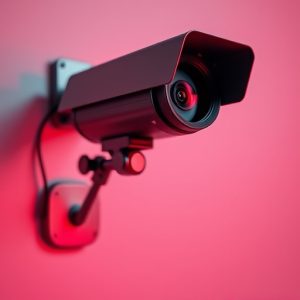Spying Silently: The Clandestine World of Hidden Sound Recorders in Spy Cameras
The integration of advanced microphones into spy cameras has revolutionized covert audio surveillanc…….
The integration of advanced microphones into spy cameras has revolutionized covert audio surveillance, enabling discreet and high-quality sound recording in environments where overt recording is not feasible. These miniaturized devices are designed to blend into their surroundings, capturing clear audio even from a distance, and are equipped with noise-cancellation capabilities to function effectively amidst ambient noise. The technology raises important legal and ethical considerations, as its use must comply with privacy laws and respect individual rights. Law enforcement and individuals can utilize these devices for evidence gathering and personal safety, but only within strict legal and ethical guidelines to prevent abuse. The potential for misuse necessitates responsible deployment and oversight to ensure a balance between security needs and the preservation of privacy. In the realm of research and security, ethical protocols are essential to maintain the integrity of data obtained through these devices, as unethical use can lead to legal challenges and questions about the validity of the findings. Spy cameras with hidden microphones offer significant advancements in covert audio capture, but their use must be carefully managed to uphold societal norms and values.
Exploring the covert world of surveillance, this article sheds light on the hidden sound recorder within spy cameras. These devices blend stealth with precision, capturing audio without raising suspicion. Delve into the sophisticated technology behind spy camera microphones and understand how they remain undetected, ensuring sensitive recordings. As we navigate through the technological prowess, we’ll also examine the intricate legal and ethical considerations surrounding their use, offering a comprehensive overview of this clandestine tool in the realm of espionage and investigation. Keywords: spy camera microphone, surveillance technology, audio recording.
Unveiling the Stealthy Operations of Hidden Sound Recorders in Spy Cameras
Hidden sound recorders, often integrated into spy cameras and microphones, have become increasingly sophisticated, enabling covert surveillance with remarkable efficiency. These devices are designed to operate discreetly, capturing audio without drawing attention to their presence. The miniaturization of technology has allowed for the creation of tiny microphones that can be concealed within everyday objects or even within the camera hardware itself. This stealth capability is particularly valuable in environments where overt recording is not an option, such as private spaces or sensitive locations.
The integration of hidden sound recorders into spy cameras and microphones has significant implications for both security and privacy. These devices can be used by law enforcement to gather crucial evidence or by individuals for personal safety. However, their use must be balanced with ethical considerations and legal frameworks to protect individual rights. The technology’s effectiveness in capturing clear audio, even from a distance, underscores the importance of responsible deployment and monitoring to prevent misuse. As these devices become more ubiquitous, it is imperative for both manufacturers and users to adhere to strict guidelines and ensure that privacy is safeguarded alongside security.
The Tech Behind Spy Camera Microphones: Capturing Audio Without Detection
In recent years, the integration of microphones within spy cameras has become a testament to technological advancement in the realm of covert surveillance. These devices are meticulously designed to record audio with unparareled stealth, ensuring that conversations remain undetected and secure. The technology behind these spy camera microphones is a blend of miniaturization and noise-cancellation expertise, allowing for clear sound capture even in environments with ambient noise. The microphones are often so small that they are virtually invisible to the naked eye, yet they possess the capability to pick up vocal frequencies with high sensitivity. This invisibility extends beyond the physical; acoustic signatures are carefully calibrated to avoid detection by common audio surveillance detection equipment. The result is a recording device that can operate in close proximity to its subjects without alerting them to their being recorded, providing valuable intelligence or evidence for various applications, from law enforcement to personal security.
Furthermore, the integration of these microphones with spy cameras often involves sophisticated algorithms that filter out irrelevant sounds while enhancing the desired audio frequencies. This selective auditory processing ensures that only the relevant sounds are captured, leading to clear and usable recordings even in challenging acoustic environments. The technology also includes adaptive sound recording features that can automatically adjust to different sound levels and distances from the speaker, maintaining consistent audio quality throughout the recording session. These spy camera microphones represent a significant leap forward in covert audio surveillance technology, offering users a powerful tool for capturing audio without raising suspicion or detection.
Legal and Ethical Considerations When Using Hidden Sound Recording Devices
The use of hidden sound recording devices, often integrated with spy cameras and microphones, raises significant legal and ethical considerations. Legally, it is imperative to be cognizant of privacy laws and regulations, which vary by jurisdiction but generally protect individuals’ right to privacy. Recording conversations without consent, except in specific circumstances such as for law enforcement purposes or where recording is explicitly permitted by law, can lead to legal repercussions. Ethical considerations are equally pivotal; covert recordings can capture sensitive information, and the act of recording without transparency can manipulate and deceive individuals who may not be aware they are being monitored.
In instances where hidden sound recording devices are employed for research or security purposes, it is crucial to establish clear protocols that align with ethical standards. These protocols should ensure that participants or individuals involved are fully informed about the recording, its purpose, and how the data will be used. The integrity of the data collected in such a manner is paramount; any evidence obtained through deceptive practices may not be admissible in court and can undermine the credibility of research findings. Thus, the deployment of spy cameras and microphones should always be guided by a commitment to uphold legal and ethical norms, ensuring that the use of such technology contributes positively rather than infringing on individual rights or engaging in unethical practices.


